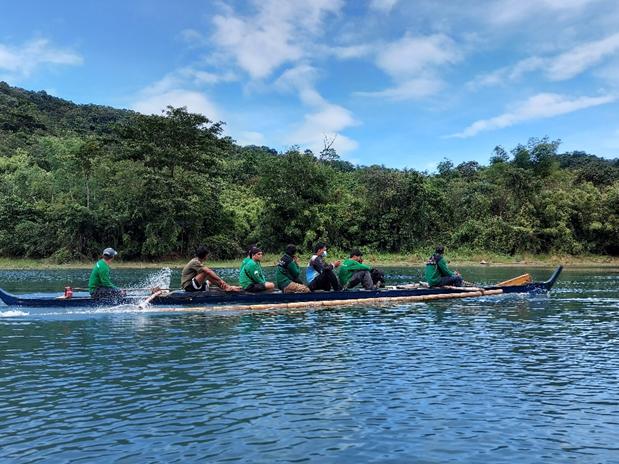Manila Water continues to strengthen watershed management programs

Manila Water joins the Dumagat and Ipo community members in protecting the Ipo Watershed through the Bantay Gubat group. The company, through its social development arm, the Manila Water Foundation, also aims to further improve the water system and sanitation facilities in the Ipo Watershed area by bringing in its Water Access, Sanitation and Hygiene or WASH program.
MANILA, Philippines — The Philippines is among the world’s most disaster-prone countries. According to World Bank, the country—which is along what is called the Pacific “typhoon belt”—experiences an average of 19 to 20 typhoons per year.
Given the threat of climate change, East Zone concessionaire Manila Water is implementing nature-based solutions including the protection, rehabilitation, and enhancement of watersheds to address the increasing risk of deteriorating raw water quality due to soil erosion during heavy rainfall and typhoons.
Manila Water spent about P50-million to support its watershed management initiatives in 2021 and continues to sustain it to this day. The company’s watershed management can help improve biodiversity and contribute to carbon sequestration that can mitigate the effects of climate change.
The company is able to help in the protection of 171,901 hectares in General Nakar, Ipo, La Mesa, Nabaoy, Pan-as Hayiban, and Villa Maria watersheds. This is done in partnership with the Metropolitan Waterworks and Sewerage System (MWSS), Department of Environment and Natural Resources (DENR), various local government units (LGUs), indigenous people residing in watershed communities, and other stakeholders.
“As Filipinos continue to face the impact of a continuing climate crisis, Manila Water remains committed to continue implementing, strengthening, and replicating our watershed management program in key watershed communities across the country,” said Manila Water Sustainability Head Sarah Bergado.
Article continues after this advertisementREAD: Manila Water eyes local, international expansion
Article continues after this advertisementManila Water also helped in formulating the Integrated Watershed Management Plan (IWMP) of General Nakar, La Mesa, and Upper Marikina watersheds. It will also take part in the development of an IWMP to support the existing Ipo Watershed Management Framework Plan.
In addition to its watershed management efforts, Manila Water has also partnered with the Manila Water Foundation (MWF) to develop a Water Access, Sanitation, and Hygiene (WASH) program for the Ipo watershed communities. The Ipo watershed area has 281 households, 80 of which are from indigenous people’s families.
“Together with the Ipo Watershed Protection partners, the MWF aims to address the current WASH concerns of communities residing within the watersheds by improving the water systems and sanitation facilities in the area and safeguarding the water source for Metro Manila,” shared Manila Water Foundation Executive Director Reginald Andal.
MWF likewise, through its Likas program, has included watershed management as one of its focus areas to further support Manila Water’s programs on watershed management.
Reforestation initiatives
Manila Water has planted 62,823 native trees in 2021. The company has already nurtured a total of 1,255,612 trees in 2,459 hectares across the country since 2006. It has also been supporting the MWSS’ Annual Million Trees Challenge (AMTC) since its launch in 2017.
“We have contributed 40,000 trees in La Mesa watershed in 2021. In support of the AMTC, Manila Water has already contributed a total of 386,000 trees in the La Mesa and Upper Marikina Watersheds since the beginning of the program in 2017,” Bergado added.
Manila Water is also currently undertaking its annual reforestation initiatives in a series of tree planting in several areas in the country during the company’s Arbor Day celebration.
For this year, the company is also set to conduct a Forest Carbon Accounting in Ipo, La Mesa, and Upper Marikina Watersheds to determine the baseline of carbon sequestration and the carbon uptake of the trees planted in these watersheds.
“This will quantify the impact of Manila Water’s reforestation and forest protection programs in capturing carbon from the atmosphere,” said Bergado.